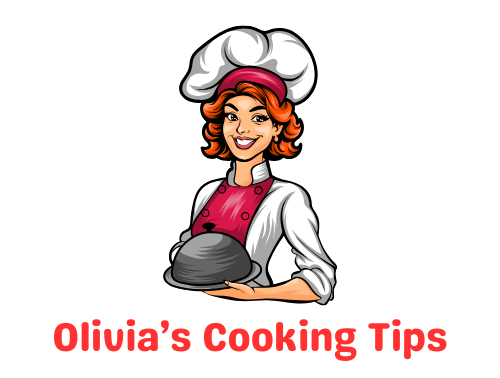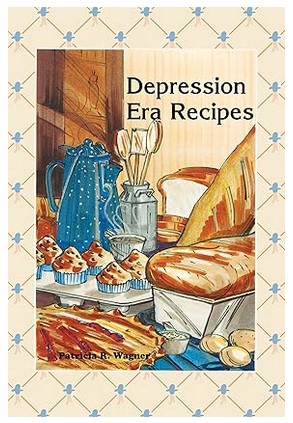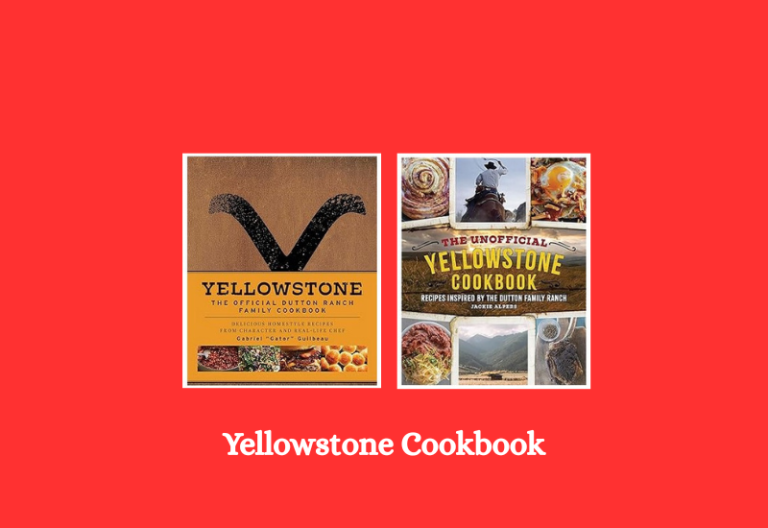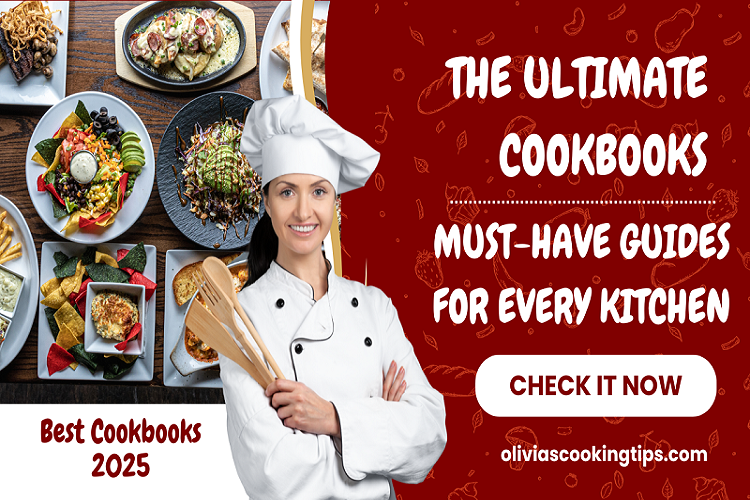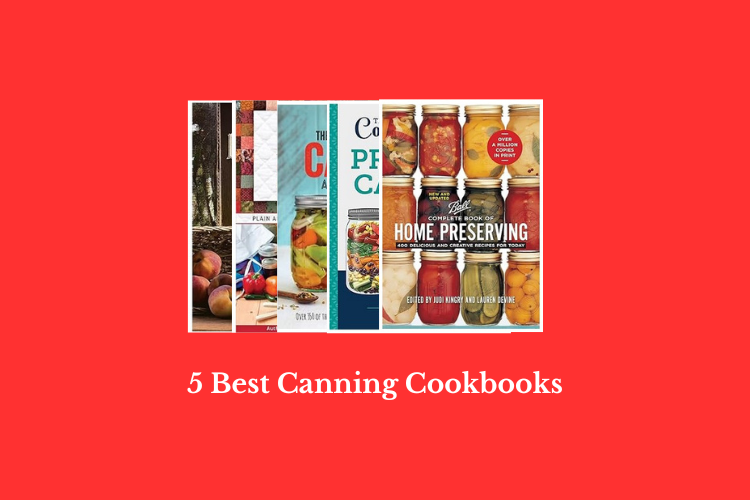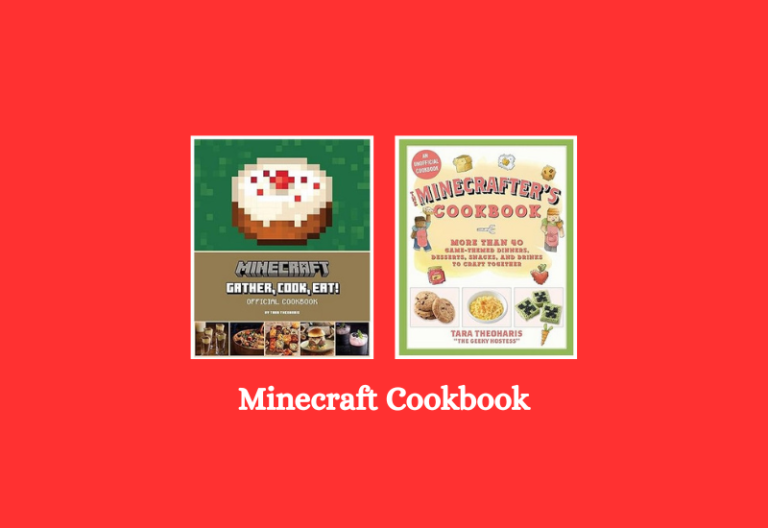The 5 Best Vintage Cookbooks Every Kitchen Needs for 2025
Old cookbooks hold more than recipes – they carry the warmth of family traditions, handwritten notes, and the flavors of simpler times. Each page tells a story, often passed down through generations.
With rich illustrations, straightforward instructions, and unforgettable dishes, vintage cookbooks offer something modern ones often miss: heart. These classic gems feature comfort foods, forgotten techniques, and the original charm of home cooking before shortcuts and trends took over.
Some books even reveal long-lost regional flavors that deserve a comeback. Readers can explore the roots of their favorite meals or discover entirely new ones with a nostalgic twist. These cookbooks aren’t just for collectors; they’re for anyone who loves real food made with care.
Grab an apron, flip through the worn pages, and let these time-tested treasures bring a little old-school magic back into the kitchen. The best vintage cookbooks still hold the power to inspire, nourish, and connect.
5 The Best Vintage Cookbooks
1.
Vintage cookbooks bring charm, history, and forgotten flavors to today’s kitchens. Among the most fun and unique is Baking Yesteryear by B. Dylan Hollis.
This cookbook dives deep into baking recipes from the 1900s to the 1980s. With humor, personality, and real passion, Dylan brings the past back to life—one cake at a time.
Author Background
 Who is B. Dylan Hollis?
Who is B. Dylan Hollis?
B. Dylan Hollis is not a typical cookbook author. He gained fame through social media, where he bakes quirky, old-school recipes and shares the results in funny videos.
His cheerful energy and sharp wit have made millions of viewers laugh and learn at the same time.
Dylan isn’t a trained chef. He’s more of a vintage recipe explorer. He hunts through antique cookbooks, tests strange ingredients, and shares both hits and flops.
His love for history and baking makes his content stand out. With each recipe, Dylan brings the past into modern kitchens in the most entertaining way.
Cookbook Overview
A Fun Journey Through the Decades
Baking Yesteryear isn’t just a cookbook – it’s a time machine. Each chapter covers a different decade from the 1900s to the 1980s. Inside, you’ll find recipes that once filled dinner tables across the decades. Some are classics. Others are strange. All are full of character.
This cookbook doesn’t follow trends. It celebrates forgotten recipes, like Chocolate Potato Cake from the 1910s or Tomato Soup Cake from the 1950s. Dylan picks the most interesting ones from hundreds he has tested.
You’ll also find a few of the worst recipes – meant to surprise and maybe even make you laugh. The mix of serious baking and playful commentary makes the book feel both useful and fun. It’s like having a funny friend in the kitchen.
Recipe Categories
Sweet, Strange, and Sometimes Surprising
Dylan covers a wide range of vintage baked goods. Some use odd ingredients. Others remind us of the comfort food our grandparents may have loved.
A few recipe highlights include:
-
Cornflake Macaroons (1900s) – A crunchy, chewy delight.
-
ANZAC Biscuits (1910s) – Simple cookies with oats and coconut.
-
Peanut Butter Bread (1930s) – No yeast needed, full of flavor.
-
Chocolate Sauerkraut Cake (1940s) – A strange combo, but surprisingly good.
-
Tomato Soup Cake (1950s) – Moist, spiced, and not what you expect.
-
Potato Chip Cookies (1970s) – Salty and sweet in one bite.
There are 101 recipes in total. Most are easy to follow. Many have ingredients you already have at home. The book balances safe favorites with bold experiments.
Features
What Makes This Cookbook Stand Out
Baking Yesteryear offers more than recipes. It entertains while it teaches. Here’s what sets it apart:
-
Decade-by-Decade Format
Each section starts with a short story about the food trends of that time. It helps readers understand the recipe’s background. -
Funny Commentary
Dylan’s humor runs through every page. He adds jokes, puns, and honest thoughts about each recipe. Some will make you laugh out loud. -
Colorful Photos
The book has full-color pictures of every dish. You can see exactly what you’re making—and decide if you want to try it. -
Simple Steps
Each recipe has clear instructions. Dylan avoids complex language. That makes the book great for beginners and non-native English speakers. -
Bonus Fails
Not every recipe Dylan tried made the cut—but a few bad ones still made it in for fun. Think of it as baking truthfully, not just perfectly.
2.
Old cookbooks hold more than recipes. They tell stories. Stories of family dinners, handwritten notes in the margins, and meals cooked with care.
Among these treasures, one book stands out for both its charm and its collection of forgotten favorites – Betty Crocker Lost Recipes.
About Betty Crocker
Betty Crocker isn’t a real person. She was created by a food company in the 1920s to give advice and answer cooking questions. Over the years, Betty became one of the most trusted names in American kitchens.
She represented home cooks across the country – especially those who enjoyed cooking from scratch. Through magazines, radio shows, and cookbooks, Betty Crocker helped people cook better meals at home.
Her name still appears on boxes, cans, and books today. She may not be real, but her recipes feel personal to many.
Cookbook Overview
What Is “Betty Crocker Lost Recipes”?
This cookbook brings back old favorites. It’s like a time machine for your taste buds. Inside, you’ll find dishes people once made all the time but don’t cook as often now.
About 80% of the book features traditional recipes made from scratch. These are the kinds of meals your grandmother might have made.
The other 20% is more playful. It shows how people used to celebrate with food. Think of quirky party ideas, like hosting a Hawaiian Tiki Party. Alongside the recipes, the book includes stories, old photos, and colorful artwork that give it a warm, vintage feel.
Recipe Categories
What Types of Recipes Are Inside?
The recipes cover a wide range of meals. From hearty dinners to light salads and classic desserts. Each one brings back flavors from a different time.
-
Main Dishes: Beef Stroganoff, Chicken à la King — rich, filling, and satisfying.
-
Salads: Waldorf Salad — a mix of apples, celery, and nuts that once appeared at every potluck.
-
Cakes and Sweets: Chiffon Cake — soft, airy, and sweet.
-
Retro Favorites: Casseroles, molded gelatin dishes, and more.
These recipes focus on basic ingredients. You won’t need fancy tools or hard-to-find items.
Features
What Makes This Book Special?
Betty Crocker Lost Recipes isn’t just a cookbook. It’s a piece of history. Here’s what makes it stand out:
-
Easy-to-follow directions written in a friendly style.
-
Ingredients that are simple and easy to find in stores today.
-
Extra pages full of old ads, artwork, and stories that bring each recipe to life.
-
Fun tips from the past, like how to throw themed parties.
-
A sense of comfort and nostalgia that many cookbooks don’t offer.
This book brings joy not just through food, but also through memories. It reminds us of times when cooking was slower, meals were shared, and recipes were passed down by hand.
3.
Vintage cookbooks open a door to the kitchens of the past. They carry flavors, words, and methods from another time. One such treasure is The First American Cookbook by Amelia Simmons. This book stands out as the first known cookbook written by an American, for Americans. It’s more than a collection of recipes—it’s a window into colonial life and early American cooking.
Let’s explore the author, the book, and the rich content it offers.
Author Background
 Who is Amelia Simmons?
Who is Amelia Simmons?
A Domestic Cook with Real-World Experience
Amelia Simmons lived in Colonial America. She wasn’t a chef in a restaurant or a writer by trade. She worked as a domestic, cooking in private homes.
Her knowledge came from hands-on work, not formal education. She saw firsthand how families prepared meals using local foods. This gave her deep insight into food quality, storage, and preparation.
Her advice came from experience, not theory. Simmons believed that smell, color, and touch were the best ways to judge freshness. Her tips feel honest and practical, even today.
A Voice for Early American Cooking
In 1796, she published her cookbook. This was the first time an American shared cooking knowledge in a book written and printed in the United States. Simmons filled her pages with local ingredients and common dishes of the time. Her words captured not only recipes but also the language and habits of her world.
Cookbook Overview
A Historic First
The First American Cookbook is a facsimile edition of that 1796 original. It preserves the content, style, and charm of the first printing. This makes it both a cookbook and a piece of history.
Inside, readers find recipes along with early uses of words like “cookie” and “slaw.” These words are common now but were first published here. The book also marks the first known use of pearlash, a baking ingredient that later led to modern baking powder.
Simple, Honest, and Full of Flavor
The writing feels natural and easy to follow. Recipes are short and straight to the point. Simmons uses plain language to explain how to choose and prepare meats, vegetables, and grains. She includes helpful notes like how to tell if fish is fresh or how to roast meat evenly.
Recipe Categories
Colonial Staples
This cookbook features dishes that early Americans loved. Cornmeal recipes stand out. Simmons shares how to make Indian pudding, Johnny cake, and Indian slapjacks. These are hearty and full of local flavor.
Pumpkin and winter squash also play a big role. Her puddings offer a sweet look into the seasonal meals of the past.
Meat and Fish
Simmons guides readers on selecting and cooking various meats. She gives advice on beef, mutton, veal, and lamb. Roasting, stuffing, and seasoning tips are clearly laid out. Even turtle finds a place in this wide collection.
Fish, too, gets careful attention. Simmons suggests smelling the fish first. If it smells fresh, it’s good. This kind of advice may seem simple, but it still holds true today.
Vegetables and Herbs
She highlights vegetables like onions, potatoes, carrots, asparagus, and beans. Her focus on freshness and tenderness is useful for modern cooks too. Even in her time, people valued taste and texture.
Drinks and Other Recipes
Readers will find a recipe for spruce beer—a homemade brew using tree needles. Unusual? Yes. But it was a common refreshment in the colonies.
Features
Authentic Language and Glossary
The cookbook keeps the original spellings and phrases. Words like “emptins” and “frumenty” may confuse modern readers. That’s why the book includes a glossary. It helps explain these old terms in simple words.
The glossary makes the book easier to use and adds to its charm.
Historical Context
An essay by Mary Tolford Wilson offers more background. It explains the time, culture, and kitchen customs of the late 1700s. This helps readers better understand the world Amelia Simmons lived in.
A Great Resource for Many
This book speaks to more than just cooks. Collectors, food historians, and anyone interested in early American life will enjoy it. It feels like holding a part of the past in your hands.
The First American Cookbook by Amelia Simmons gives a rare and personal look into the food of early America. It’s a valuable addition to any cookbook shelf, offering lessons from a time when cooking was simple, seasonal, and full of care.
4.
Old cookbooks carry more than recipes. They tell stories. They give a glimpse into kitchens from long ago. One special example is the Depression Era cookbook by Patricia R. Wagner.
This book doesn’t just share meals. It shares history, memories, and wisdom from a time when people had to do more with less. Let’s explore what makes this cookbook a treasure worth keeping.
Author Background
 Who is Patricia R. Wagner?
Who is Patricia R. Wagner?
Patricia R. Wagner has a deep interest in American history. She focuses on everyday life during hard times. Her work often highlights how families coped, cooked, and cared for each other during the Great Depression.
She brings heart and humor into her writing. Her love for vintage recipes and real stories makes her work feel both warm and honest.
This cookbook shows her passion for keeping the past alive. It’s more than a recipe collection. It’s a tribute to strong, creative people – like Grandma who made meals from what they had.
Cookbook Overview
What’s Inside the Book?
The cookbook includes over 450 recipes from the 1930s. These are simple, affordable meals. They use ingredients found in most kitchens. Nothing fancy. Just real, basic food.
Readers will also find old photos, drawings, and even poems from that time. Short stories and comments throughout the book talk about life during the Great Depression.
These extras make the book more than a cooking guide. It feels like sitting with a grandparent, listening to how things were done back then. The tone is light and friendly. The writing doesn’t feel formal. It feels like a chat over coffee.
Recipe Categories
What Types of Recipes Can You Expect?
The cookbook covers many everyday meals. Each section keeps things simple and practical. Some of the key categories include:
-
Hearty main dishes like meatloaf and casseroles
-
Homemade breads and biscuits
-
Simple soups and stews
-
Basic side dishes like potatoes and beans
-
Classic desserts such as pies, puddings, and cookies
-
Breakfast ideas like pancakes and porridge
These meals were made to stretch ingredients and fill stomachs. Many recipes use leftovers or cheap items. That’s part of their charm.
Features
What Makes This Cookbook Special?
This book does more than list recipes. It brings the Depression Era to life through unique extras, such as:
-
Nostalgic black-and-white photos and charming sketches
-
Helpful household hints and cooking tips
-
A spice guide and chart of weights and measures
-
Pieces of period poetry that show the spirit of the 1930s
-
Notes that describe the bright side of tough times—community, love, and laughter
All of this is wrapped in a friendly, readable style. It’s easy to follow. It doesn’t overwhelm. And it’s perfect for cooks of any level.
Patricia R. Wagner’s Depression Era cookbook stands out among vintage cookbooks. It’s not just a guide to cooking. It’s a guide to living simply, with heart. Great for anyone who enjoys history, old-school recipes, or learning how Grandma made meals with love—and not much else.
5.
Old cookbooks bring more than just recipes. They carry history, family stories, and a simple way of cooking that still works today.
One of the most well-known vintage cookbooks is the Fannie Farmer 1896 Cook Book. It’s a guide for anyone who wants to understand traditional American cooking in a clear, practical way.
Author Background
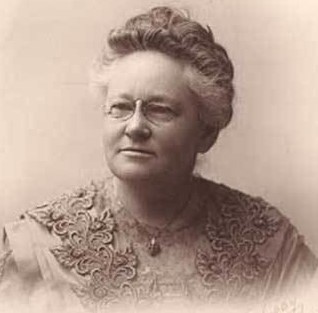 Who Was Fannie Merritt Farmer?
Who Was Fannie Merritt Farmer?
Fannie Merritt Farmer was an American cooking teacher and author. She was born in 1857 in Boston, Massachusetts. She studied at the Boston Cooking School and later became its director.
Fannie believed that cooking could be taught in a simple and scientific way. She became famous for setting standard measurements in recipes.
Before her time, cooks used vague terms like “a pinch” or “a teacup.” Fannie used teaspoons, tablespoons, and cups.
This change helped people cook more accurately. It gave confidence to beginners and helped experienced cooks get better results.
Cookbook Overview
What Makes This Book Special?
The Fannie Farmer 1896 Cook Book includes 1,380 recipes. It teaches everything from boiling an egg to preparing calf’s head. But it’s not just about food. It also explains how to set a table for tea, gives full menus for holidays, and shares tips on housekeeping.
The book became a bestseller. It helped home cooks prepare meals with clear steps. Fannie’s words made even hard dishes feel easy to try.
This cookbook is full of American traditions. People still enjoy reading it today—not only to cook but also to learn how people lived over 100 years ago.
Recipe Categories
What Kind of Recipes Are Inside?
This book covers a wide range of recipes. Here are some of the main categories:
-
Drinks: Iced Tea, Coffee, Lemonade, Mint Julep
-
Breads and Rolls: Rye Bread, Swedish Rolls, Hot Cross Buns
-
Soups and Starters: Bouillon, Chicken Soup, Oyster Stew
-
Seafood: Baked Bluefish, Soft Shell Crabs, Fried Cod Steaks
-
Meats: Roast Beef, Yorkshire Pudding, Beef Stew with Dumplings, Liver and Bacon
Each recipe is written in a simple way. Most use basic ingredients. This makes it easy for anyone to follow along.
Features
What Else Does the Book Offer?
Fannie Farmer’s cookbook includes more than just food instructions. It gives advice on:
-
How to serve meals the right way
-
What to cook for holidays and special events
-
Keeping your kitchen clean and organized
It also includes menus. These are helpful for planning a full meal. You don’t have to guess what side dish goes with what main course.
Another helpful part is the measurements. Thanks to Fannie, cooks began using standard tools like measuring cups and spoons. This made cooking more exact and less confusing.
The book is easy to read. It doesn’t use hard words. That’s why many beginners love it. And even expert cooks still find it useful.
